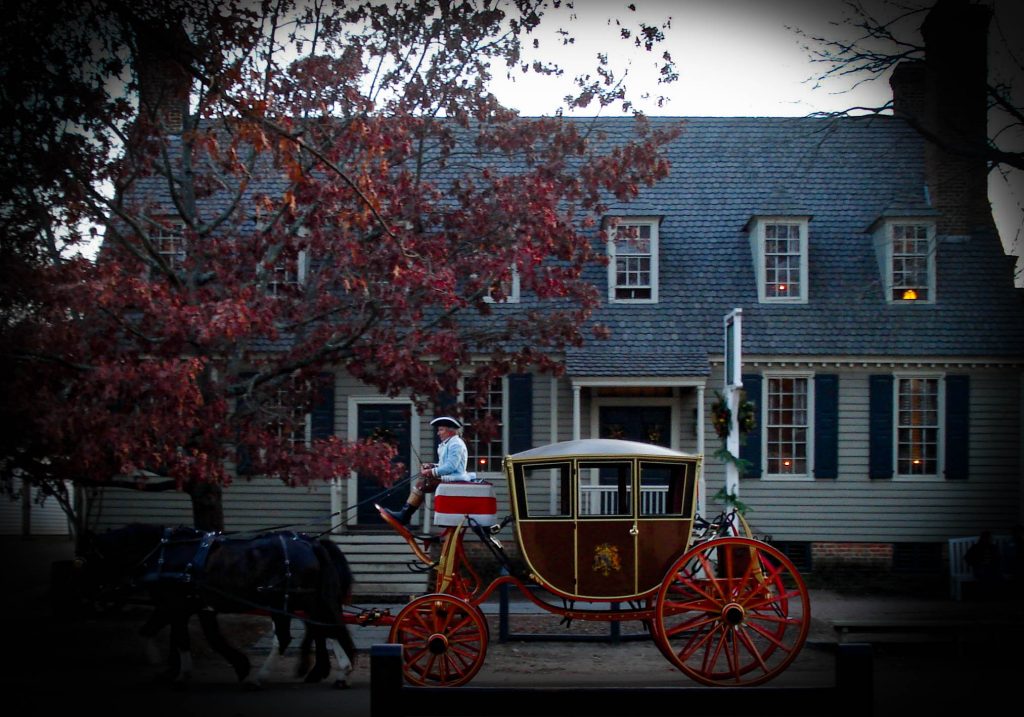Colonial Williamsburg in Virginia is lovely by day, but the 18th century springs to Brigadoon-esque life at night.
In the dim light provided by lanterns, the moon, and the reflection of the opalescent shells used for gravel, it’s harder to see all the visitors’ 21st-century garb. And the other senses are heightened. The shells crackle under foot; the uneven bricks press through shoe soles. The aromas of tavern food and burning wood mingle with that ever-present CW scent of fresh horse manure. (“Don’t step in the authenticity,” tour guides warn.)
On some nights during Christmastime, there’s another source of light, as CW continues the 18th-century tradition of “illuminations”–celebrations of major events like great military victories, the birthday of the monarch, or the arrival of a new colonial governor.
Public buildings are illuminated by lighting wood chips in wire baskets. The flames can reach splendid heights. And they provide welcome warmth on cold December nights.
A Fife and Drums march points to the significance of the occasion.
After enjoying the Illumination of the Palace Green, I took a guided tour called “Christmastide at Home”. During this tour, visitors walked to four different locations to watch, like Ebenezer Scrooge, short skits showing the joys and hardships of Christmastide life at different times in or near Williamsburg. (Our tour guide and Ghost of Christmas Past told us that her name was Mary Dickens.)
In the first skit, set before the Declaration of Independence, an enslaved cook works by a hearth and hopes against hope for a pass to see her adult son, a slave at a nearby plantation. Colonial Williamsburg does a remarkable job of celebrating the ideas that founded America while acknowledging failures in living up to those ideas.
Next, a Presbyterian and Revolutionary War sergeant explains to a young soldier why he doesn’t celebrate Christmas. (It isn’t in the Bible.) Then the first Christmas tree comes to ante-bellum Williamsburg. Lighting a tenenbaum with real candles to mark the birth of Christ was a German custom brought to Williamsburg by Karl Minnigerode, a professor of German and ancient languages at the College of William and Mary who took a boarding room at the home of Judge Nathanial Beverly Tucker (today CW’s St. George Tucker House). Finally, a mother and daughter living in CW await news of their husband and father fighting in World War II. The electric lights on their Christmas tree signal how much changes in 100 years.
The acting is sometime mediocre, but unvarnished struggles and sorrows bring the past to life. It’s almost like turning back time.
After my misspent youth as a wage worker, I’m having so much more fun as a blogger, helping other discerning travellers plan fun and fascinating journeys. Read more …

